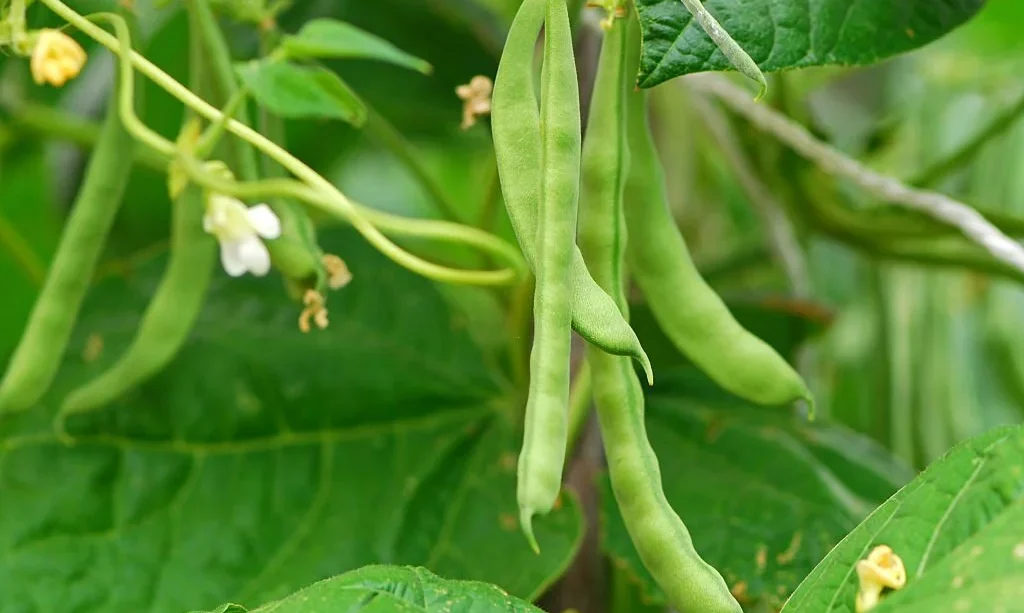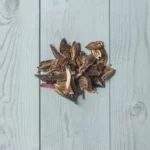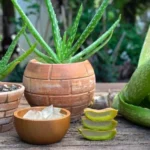If you’re someone who adores the crisp, fresh taste of homegrown veggies, then you must be familiar with the joy of picking green beans straight from your garden. Green beans, with their lush foliage and cascading vines, are not just an essential part of our diets, but they also add an aesthetic appeal to our gardens. But have you ever wondered, “Just how many green beans will my plant yield?” If so, you’ve come to the right place! In this article, we’re going to delve into the world of green beans and answer that very question for you.
- Twelve 14.5 oz cans of DEL MONTE HARVEST SELECTS BLUE LAKE Whole Green Beans Canned Vegetables
- Enjoy the taste of wholesome green beans with a dash of natural sea salt in each can of BLUE LAKE green beans
- DEL MONTE canned green beans are harvested at peak freshness and packed to seal in essential nutrients and delicious green bean flavor
- Each BLUE LAKE green beans can contains no preservatives and uses the highest quality Non-GMO* ingredients
- These canned whole green beans are ready to eat straight from the can for a simple side dish
Green Bean Plants
Now, to get to the answer, we first need to understand our little green friends a bit better. Green beans, also known as snap beans or string beans, start their journey as a tiny seed, buried in the soil. In no time, with a bit of sunlight, water, and a whole lot of love, they sprout, pushing tiny green leaves towards the sky.
The green bean plants are mainly of two types – bush beans and pole beans. Bush beans, true to their name, grow in a bushy manner and are usually about 1-2 feet tall. They’re the compact ones, taking less space but also producing fewer beans. On the other hand, pole beans love to climb. Give them a pole, a trellis, or even a fence, and they will grow, producing beans all summer long.
Each of these plants has its own charm, but they both share the same goal: to produce lovely, tasty green beans. So, how many beans do they actually produce? We’ll dive deeper into that in the upcoming sections, so keep reading!
Factors Affecting Green Bean Yield
So, what determines how many beans our green bean plants give us? Well, it’s not just a roll of the dice, there are actually quite a few factors that come into play.
First up is the time of year you plant them. Green beans love the sun and a little warmth. Plant them too early when it’s still cold, and they might not even show up. Plant them too late, and they might not get enough time to produce beans before the chill sets in again.
Next is the soil. Green beans aren’t too picky, but they do like their soil well-drained and enriched with organic matter. If the soil is too heavy or lacks nutrients, the plants might not be able to produce as many beans as we’d like.
Water and sunlight are also crucial. Green beans need a good drink, but not a flood, and they love basking in the sun. If they don’t get enough of either, the bean production could be lower.
Lastly, pests and diseases can be party poopers. They can damage the plants and reduce the number of beans you get. A little care can go a long way in protecting your plants from these unwanted guests.
- Microgreens Growing Trays: You will receive 5 pcs seed starter tray, comes with 10 planting papers, the size is 12.7 * 10.23 * 4.95 inch, fit for your daily use, help your fruits, veggies and flowers grow better, no need soil, only water you can taste fresh vegetables at home
- Longlasting & Healthy: Seed sprouting tray for sprouts are made of high quality food grade plastic material, compared with other seedling trays, avoid rusting and more easy to clean, convenient to use and very efficient in draining the water, allows the seeds to sprout faster and not mold
- Convenient Design: The clear cover can keep environment more humid meanwhile the plants get enough light to grow, the grid sprout tray with densely small holes is good for the seeds to take root easily, can absorb enough water and nutrition in water container tray, help your plant grow quickly
- Wide Application: This seed sprouter tray can sprout various small seeds, such as mung beans, bean sprouts, wheatgrass, cat grass, green lentils, sunflower seeds, alfalfa, vanilla, microgreens, perfect for use for balcony, patio, kitchen, etc.
- Warm Tips: Our sprouts growing kit can sprout multiple types of seeds, and if the seeds are too small, you can place germinating paper on the mesh tray to prevent seeds from leaking; Don’t put too many seeds so they don’t overlap and mold; Please keep the air ventilated and wait patiently for 3-10 days
Estimating Green Bean Yield per Plant
Now, let’s talk numbers. How many beans can you expect from your plants? Well, this is where it gets a bit tricky. Because of all the factors we mentioned earlier, the number can vary.
If you’re growing bush beans, you can expect each plant to give you about 30-50 pods, depending on how happy the plant is. These beans are early birds and usually give all their beans in a short time, often in a couple of weeks.
Pole beans, on the other hand, are the gift that keeps on giving. They take a bit longer to start producing beans, but once they start, they keep going for the whole summer. You can expect to pick 50-100 beans from each pole bean plant over the season.
Remember, these are rough estimates, and the actual yield can be higher or lower depending on the plant’s care, the weather, and a pinch of luck!
- Boost Legume Growth: Enhance the growth of peas, beans, lima beans, and legumes with Exceed Inoculant, formulated to promote nitrogen fixation naturally.
- Organic Soil Enrichment: This humus-based powder inoculant contains live bacteria essential for legumes to form nodules, enriching the soil with nitrogen from the air.
- Increased Yields: Exceed Inoculant offers an economical solution for maximizing yields in peas and beans, providing high potency for effective results across various growing conditions.
- OMRI Listed: Certified for organic production, Exceed Inoculant ensures compliance with organic standards while supporting sustainable agriculture practices.
- Easy Application: With a 1.5 oz. package treating up to 8 lbs. of seed, Exceed Inoculant offers convenient and efficient soil inoculation for improved plant growth and productivity.
Maximizing Green Bean Yield: Tips and Tricks
So, you’ve planted your beans, and now you’re waiting for the magic to happen. But is there a way to get even more beans from your plants? Absolutely! Here are a few tips and tricks.
Firstly, give your beans a good start by planting them in nutrient-rich, well-drained soil. Make sure they get plenty of sunshine and a good amount of water – not too much, not too little. Secondly, keep a watchful eye out for pests or diseases. If you spot something fishy, take action immediately. The sooner you deal with these problems, the better your bean yield will be.
Lastly, keep picking those beans! The more beans you pick, the more beans the plant will produce. So don’t be shy about enjoying your beans throughout the season.
Case Studies
Let’s take a look at a couple of real-life examples.
Case Study 1: John, an avid gardener from Texas, planted a row of bush beans in his garden. He took good care of his plants and was rewarded with an average of 40 beans per plant. He noticed that the plants which received more sunlight produced more beans.
Case Study 2: On the other side of the country in Oregon, Emily grew pole beans on a trellis in her backyard. Even though her plants faced a minor aphid attack, prompt action saved them. Over the summer, she harvested close to 80 beans per plant. She discovered that the plants she watered regularly and moderately had the highest yield.
Conclusion
So there you have it, folks! Green bean plants can be a wonderful addition to your garden, with a good handful of beans to be expected from each plant. However, the exact number can vary, and that’s part of the fun of gardening! Remember, every bean that you harvest is a gift from the plant to you. So, nurture your plants, treat them well, and enjoy the fruits (or should we say beans?) of your labor.






